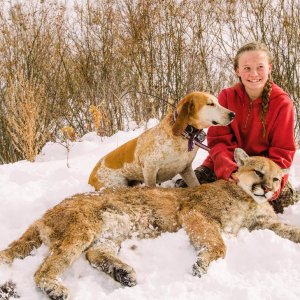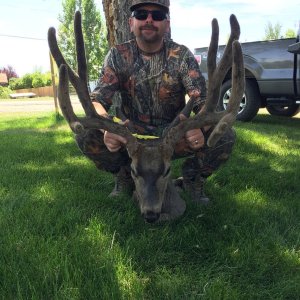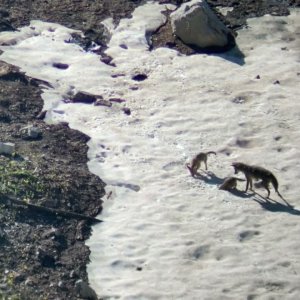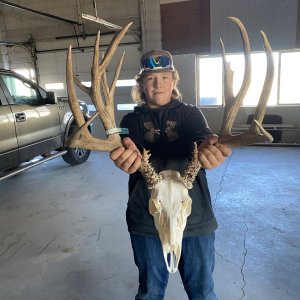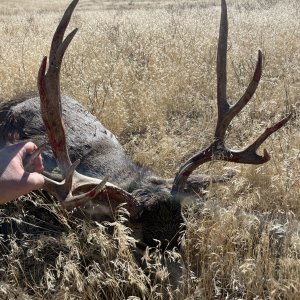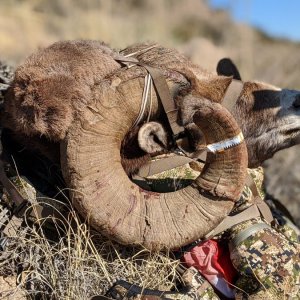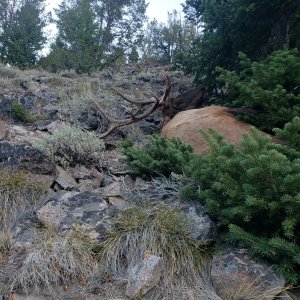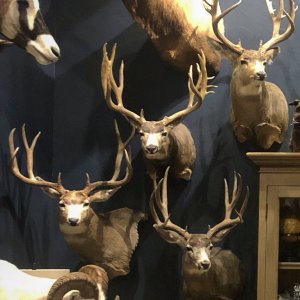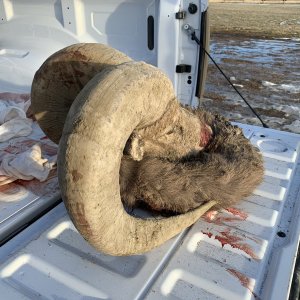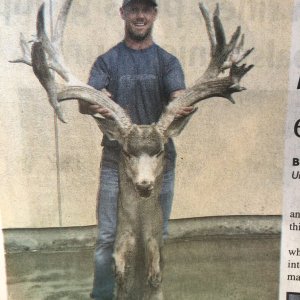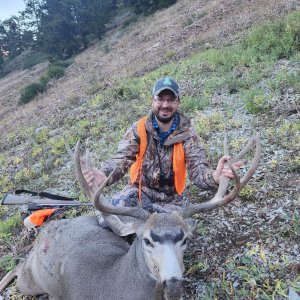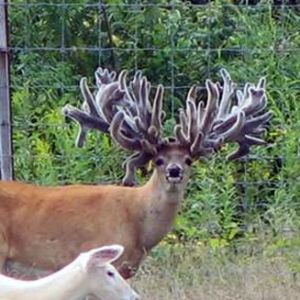W
Wildman
Guest
Just a few thoughts about mule deer management in Utah. The other threads were getting long enough that I decided to post separately.
For starters, let me just say I think there is one thing that all of us can agree on- the mule deer situation in Utah is not what we would like it to be.
A couple of observations on this point. There are two perspectives. One is, we need to get mule deer hunting back to what it was in the "good ole days." The other is, the "good ole days" are a thing of the past; lets accept the new reality. Depending on which side of the fence you sit on, your approach will be different.
I personally would like to see deer hunting like it was in the good ole days, but I realize the road there seems impossible at this point.
An important distinction on this point is why things are they way they are. The reality is that at one point Utah managed to maintain huge deer herds with huge rifle tag allotments. That is a fact. You can argue all you want that this is no longer attainable, but the reality is it has happened before. I think this is why so many people get so frustrated. If deer hunting in Utah had always been crappy, it would not be as frustrating. But because it hasn't, it is difficult for many to just "accept that it is never going to happen again" when they have seen it much better with their own eyes.
My personal opinion is it is directly related with the management of public lands. Utah as a whole is not naturally the best mule deer habitat in the country. If it were, why do you think the earlier settlers found the Paiute Indians living off of insects- I'm sure it is just because they were poor hunters or maybe that they had an aversion to venison.
The reality is that much of Utah's native habitat is non-productive. The other reality is that the hay day of mule deer hunting in Utah directly coincides with the hay day of public land improvement projects by federal and state agencies to increase grazing production for cattlemen.
Why did mule deer numbers begin to decline in the 80's and haven't been able to recover since, because public land improvement projects began declining shortly before that and have dwindled to almost nothing. There is a direct correlation between these two factors.
The reality is mule deer numbers in Utah are about what the native habitat can support- minus the effects of the introduction of elk which are now competing for the limited native resources.
So our two choices are accept that the state has limited native natural resources which don't support enough deer to even keep a few hundred Paiutes alive let alone 300,000 hunters or get serious about improvements of public lands.
As long as we are willing to accept that the present is the new reality, we will continue to have debates about who gets to hunt, what they get to hunt with, how often they get to hunt and how long they get to hunt. These "solutions" can be compared to a bunch of starving people trying to resolve who gets the last piece of meat. Inevitably, it deteriorates into a blood bath where the last man standing wins.
Or we could get serious about public land management. Although many have tried, no one has been very successful at this. In my opinion this is because the system is broken. Our government agencies are so politically hogtied, they spend millions of dollars every year on misguided projects which do virtually nothing to help the mule deer herds- many of which were never intended to. The problem with sportsman organizations is, although I believe their original intentions are good, they quickly get sucked into the political swamp and soon become little more than a politically hogtied private version of the government agencies.
The real problem is we are slaves to the "science." When decisions are made and disagreements settled, the one with the "science" on their side wins. This sounds great. But the problem is the "science" is largely a fraud. Until we as citizens get educated about the joke we call science in our society and throw it in the trash like the junk most of it is, we will never win this fight. Please refer to
http://www.monstermuleys.info/dcforum/DCForumID5/16800.html
Ironically, none of the "science" crowd had a very good rebuttal to the truth about statistical flaws of most research.
Where was the biggest buck in Utah taken this year? On a burn that was reseeded with alfalfa- Carter buck. Unfortunately, this type of management plan is completely opposite of what the public land management plan has been for the last thirty years. And we're surprised that there isn't any deer.
If this was anyone but the government they would have had their buts kicked and sent home crying years ago. But instead millions and millions of dollars have been spent, redirected and wasted on very poor "science" with absolutely no results, and we let them get away with it.
It's time the general public call their bluff on their "science" and return some common sense to public land management. Don't be to surprised if we could make the good ole days come alive. At the very least, we couldn't do much worse.
For starters, let me just say I think there is one thing that all of us can agree on- the mule deer situation in Utah is not what we would like it to be.
A couple of observations on this point. There are two perspectives. One is, we need to get mule deer hunting back to what it was in the "good ole days." The other is, the "good ole days" are a thing of the past; lets accept the new reality. Depending on which side of the fence you sit on, your approach will be different.
I personally would like to see deer hunting like it was in the good ole days, but I realize the road there seems impossible at this point.
An important distinction on this point is why things are they way they are. The reality is that at one point Utah managed to maintain huge deer herds with huge rifle tag allotments. That is a fact. You can argue all you want that this is no longer attainable, but the reality is it has happened before. I think this is why so many people get so frustrated. If deer hunting in Utah had always been crappy, it would not be as frustrating. But because it hasn't, it is difficult for many to just "accept that it is never going to happen again" when they have seen it much better with their own eyes.
My personal opinion is it is directly related with the management of public lands. Utah as a whole is not naturally the best mule deer habitat in the country. If it were, why do you think the earlier settlers found the Paiute Indians living off of insects- I'm sure it is just because they were poor hunters or maybe that they had an aversion to venison.
The reality is that much of Utah's native habitat is non-productive. The other reality is that the hay day of mule deer hunting in Utah directly coincides with the hay day of public land improvement projects by federal and state agencies to increase grazing production for cattlemen.
Why did mule deer numbers begin to decline in the 80's and haven't been able to recover since, because public land improvement projects began declining shortly before that and have dwindled to almost nothing. There is a direct correlation between these two factors.
The reality is mule deer numbers in Utah are about what the native habitat can support- minus the effects of the introduction of elk which are now competing for the limited native resources.
So our two choices are accept that the state has limited native natural resources which don't support enough deer to even keep a few hundred Paiutes alive let alone 300,000 hunters or get serious about improvements of public lands.
As long as we are willing to accept that the present is the new reality, we will continue to have debates about who gets to hunt, what they get to hunt with, how often they get to hunt and how long they get to hunt. These "solutions" can be compared to a bunch of starving people trying to resolve who gets the last piece of meat. Inevitably, it deteriorates into a blood bath where the last man standing wins.
Or we could get serious about public land management. Although many have tried, no one has been very successful at this. In my opinion this is because the system is broken. Our government agencies are so politically hogtied, they spend millions of dollars every year on misguided projects which do virtually nothing to help the mule deer herds- many of which were never intended to. The problem with sportsman organizations is, although I believe their original intentions are good, they quickly get sucked into the political swamp and soon become little more than a politically hogtied private version of the government agencies.
The real problem is we are slaves to the "science." When decisions are made and disagreements settled, the one with the "science" on their side wins. This sounds great. But the problem is the "science" is largely a fraud. Until we as citizens get educated about the joke we call science in our society and throw it in the trash like the junk most of it is, we will never win this fight. Please refer to
http://www.monstermuleys.info/dcforum/DCForumID5/16800.html
Ironically, none of the "science" crowd had a very good rebuttal to the truth about statistical flaws of most research.
Where was the biggest buck in Utah taken this year? On a burn that was reseeded with alfalfa- Carter buck. Unfortunately, this type of management plan is completely opposite of what the public land management plan has been for the last thirty years. And we're surprised that there isn't any deer.
If this was anyone but the government they would have had their buts kicked and sent home crying years ago. But instead millions and millions of dollars have been spent, redirected and wasted on very poor "science" with absolutely no results, and we let them get away with it.
It's time the general public call their bluff on their "science" and return some common sense to public land management. Don't be to surprised if we could make the good ole days come alive. At the very least, we couldn't do much worse.

